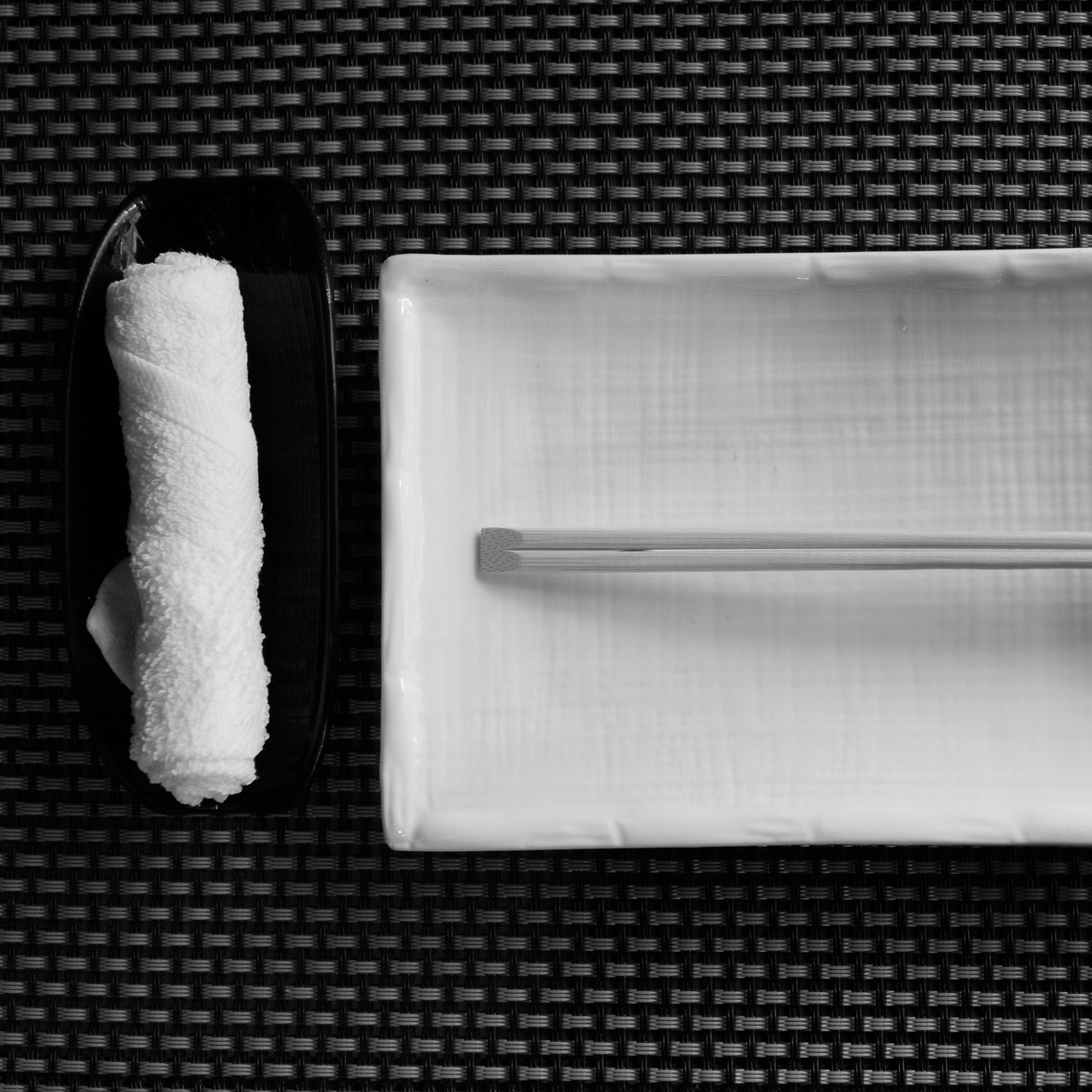〈Japanese Table Manners〉
If you are new here in Japan, you have no idea what proper table manners are in Japan. I would like to provide the proper table manners details that you will never feel embarrassed.
[Tables and seating]
Some restaurants in Japan have low tables and cushions on tatami floor instead of (or in addition to) Western-style chairs and tables. Shoes and slippers have to be removed before stepping on tatami. Also, avoid stepping onto cushions other than your own. See our sitting page for more details about sitting techniques and rules.
[Eating]
Wet towels (oshibori) are provided at most restaurant to clean your hands before eating. After ordering, it is common to wait for everyone’s order and then to start the meal with the phrase “itadakimasu” (“I gratefully receive”). If a dish is better eaten right away but others at the table have not been served yet, the phrases “osaki ni dōzo” (“please go ahead”) or “osaki ni itadakimasu” (“allow me to start before you”) can be useful.
When eating from small bowls, it is correct manner to pick up the bowl with your hand and lead it close to your mouth when eating from it; however, larger types of dishes should generally not be picked up. When eating from shared dishes (as it is commonly done at some restaurants such as izakaya), it is polite to use the opposite end of your chopsticks or dedicated serving chopsticks for moving food to your own dish.
Blowing your nose at the table, burping and audible munching are considered bad manners in Japan. On the other hand, it is considered good style to empty your dishes to the last grain of rice. If there are food items that you do not like or cannot eat, replacements may be available at restaurants or ryokan if you tell them in advance. Otherwise, it is advisable to leave the items on the dish.
After finishing your meal, it is generally good manner to return all your dishes to how they were at the start of the meal. This includes replacing the lids on dishes and putting your chopsticks back on the chopstick rest or in its paper holder. Conclude the meal with the phrase “gochisōsama deshita” (“thank you for the feast”) which includes gratitude not only towards the cook but also the ingredients consumed.
There are some specific manners for eating. I will provide them next time something like how to eat noodles, sushi and things like that.
〈日本のテーブルマナー〉
ここ日本に来たばかりの場合、日本での適切なテーブルマナーが何であるかわからないかと思います。恥ずかしい思いをしないように、正しいテーブルマナーをお伝えしたいと思います。
【テーブル席でのマナー】
日本の一部のレストランでは、洋風の椅子とテーブルの代わりに、畳の上に低いテーブルと座布団を置いています。 畳を踏む前に靴とスリッパを脱がなければなりません。 また、自分のクッション以外の上に乗らないようにしてください。
【食べるときのマナー】
ほとんどのレストランでは、食事の前に手をきれいにするために、おしぼりが用意されています。 注文後、全員の注文を待ち、「いただきます」の合言葉で食事を始めるのが一般的です。 料理はすぐに食べた方が好ましいですが、他の料理がまだ提供されていない場合は、「お先にどうぞ」または「おさきにいただきます」というフレーズを使用することができます。
小鉢から食べるときは、手で茶碗を持って口に近づけるのが正しい作法です。 ただし、より大きなお皿の料理は一般的に持ち上げるべきではありません。 共有の皿から食べる場合(居酒屋などの一部のレストランで一般的に行われているように)、自分の皿に食べ物を移すには、箸の反対側または専用の取り箸を使用するのが礼儀です。
テーブルで鼻をかんだり、げっぷをしたり、咀嚼音を大きく立てたりすることは、日本では行儀が悪いと考えられています。 一方で、ご飯を最後まで綺麗に食べることは、良いスタイルと考えられています。 苦手な食材や食べられない食材がある場合は、レストランや旅館などに事前に伝えておけば代替え品を用意してくれることもあります。 それ以外の場合は、皿の上に置いておくことをお勧めします。
食事が終わったら、すべての食器を食事の最初の状態に戻すのが一般的なマナーです。 これには、食器のふたを取り替えたり、箸を箸置きやペーパーホルダーに戻したりすることが含まれます。 料理人だけでなく、食べた食材への感謝を込めた「ごちそうさまでした」で食事を締めくくります。
食事は、いくつかの特定のマナーがあります。 次回は麺の食べ方やお寿司の食べ方などをご紹介します。

